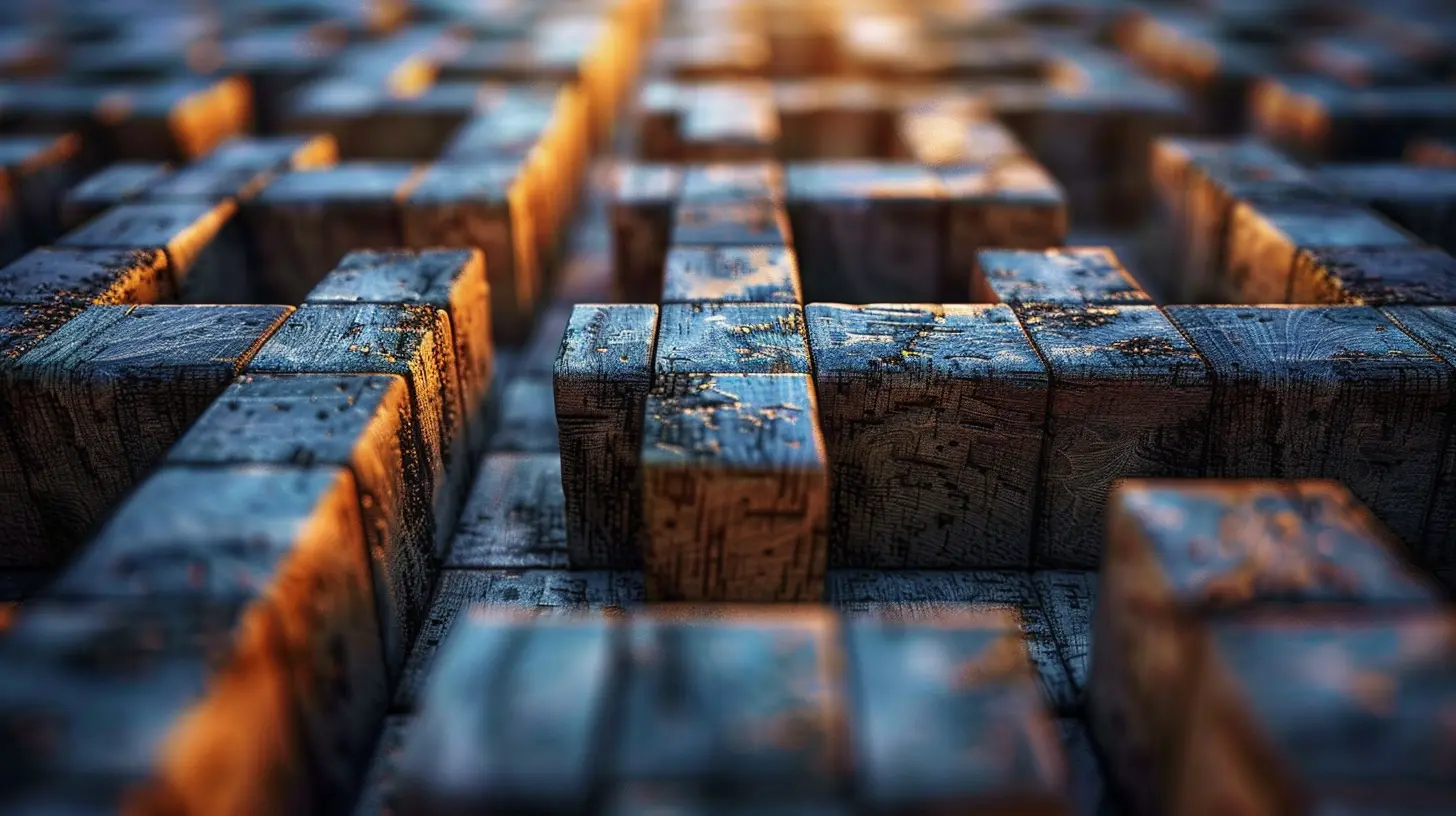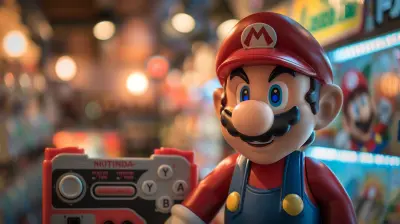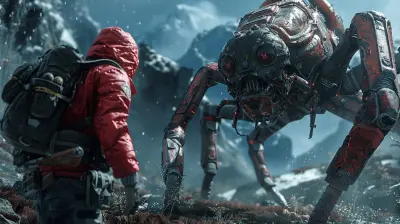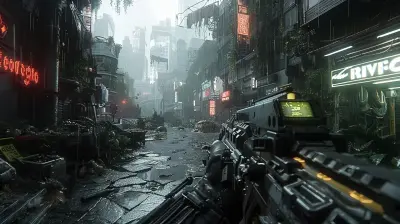Puzzle Design Strategies That Challenge and Delight
4 April 2025
Puzzles have been a source of fascination for us humans for centuries. From ancient riddles to video game conundrums, puzzles challenge our minds, fuel our curiosity, and, let’s be honest, can drive us a little crazy at times. But what exactly makes a puzzle good? The best puzzles aren’t just designed to stump the player; they’re crafted to entertain, engage, and deliver that “aha!” moment that feels like you’ve just unlocked a tiny piece of the universe. Whether you’re designing puzzles for a video game, a board game, or an escape room, there are strategies that can elevate your puzzles to a whole new level. Let’s dive into the world of puzzle design strategies that both challenge and delight.
Why Puzzle Design Matters
Ever played a game where the puzzle felt like a roadblock instead of an enjoyable challenge? It’s frustrating, right? Puzzle design isn’t just about throwing obstacles in the player's way; it’s about creating an experience. A good puzzle feels like a conversation between the designer and the player. As a designer, you're leaving clues, nudges, and surprises, inviting the player to piece together the solution. Designing puzzles is both an art and a science, and balancing difficulty, creativity, and satisfaction is key.Now, let’s break down some strategies that can help you craft puzzles that players will remember (in a good way).
1. Start With the Goal: What's the Big Picture?
Before getting into the nitty-gritty of mechanics or clues, think about the purpose of your puzzle. What role does it play in your game or experience? Is it meant to advance the story? Test a skill? Offer a breather between action-packed moments? Knowing the "why" behind your puzzle will help you shape its design.For instance, if your game is a suspenseful mystery, a puzzle might involve solving a cryptic message left by a villain. On the other hand, in a lighthearted adventure game, you might design a goofy pattern-matching puzzle to open a treasure chest. Always start with the destination in mind.
2. Balance Challenge and Accessibility
Let’s be real: nobody likes puzzles that feel too easy, but make it too hard, and players might toss their controller or flip the table. The sweet spot lies somewhere in between. One clever approach is the "scaffolding" method. Start with a simpler version of your puzzle mechanic so players can get familiar with it. As they progress, layer on complexity.Think about Portal, the beloved puzzle-platform game. The first few chambers are designed to teach you how portals work. By the end, you’re solving intricate puzzles that require you to stack skills. It’s all about earning the player’s trust and giving them the tools to succeed before cranking up the challenge.
3. Clarity Is Key: Give Clear Rules and Feedback
You know what kills the fun of a puzzle instantly? Confusion. Not the fun kind of confusion where you're pondering a clever riddle, but the "What the heck am I even supposed to do?" kind. Players should have a clear understanding of the rules governing the puzzle. If they’re unclear about what they’re trying to achieve, frustration takes over.Include feedback mechanisms that let players know they’re on the right (or wrong) track. For example, if they’re inputting combinations, give a satisfying sound for a correct input or a subtle visual cue for progress. Even small breadcrumbs can keep players engaged instead of ready to rage quit.
4. Embrace the "Aha!" Moment
The beauty of puzzles lies in the "aha!" moment—the instant when everything clicks, and the solution becomes clear. As a designer, your job is to set the stage for this moment. Usually, this involves a bit of misdirection followed by revelation.One great technique here is the "reframing" approach. Present the puzzle in a way that makes players see it from one perspective, but the solution requires them to shift their thinking. For example, in the classic point-and-click adventure game The Secret of Monkey Island, many puzzles involve using objects in unexpected ways. It’s all about that delightful twist that rewards lateral thinking.
5. Create Layers of Challenge
A well-designed puzzle can be appreciated on multiple levels. Some players enjoy solving basic puzzles, while others relish dissecting every nuance to find hidden layers. Cater to both audiences by building layered challenges into your puzzle.For instance, think about a treasure map puzzle. The first challenge could involve piecing together torn fragments of the map. But once completed, maybe the solution involves deciphering hidden symbols marked on the map. Tiered challenges provide depth and replayability, making your puzzle more memorable.
6. Incorporate Storytelling into Your Puzzles
Puzzles become far more compelling when they feel like an organic part of the story or world. Context is everything. A random Sudoku puzzle slapped into a medieval fantasy game? That’s going to feel jarring unless it’s tied into the narrative somehow.Take cues from games like The Legend of Zelda series, where puzzles are beautifully integrated into the environment. Maybe you light torches in a dungeon to reveal secret doors or align celestial symbols in a temple to uncover ancient lore. When puzzles carry narrative weight, they don’t just challenge players—they immerse them.
7. Variety Keeps Things Fresh
Nobody wants to solve the same type of puzzle over and over. Mix it up! Toss in logic puzzles, physical challenges, pattern recognition, word games—the options are endless. Adding variety not only keeps players engaged but also broadens the appeal of your game.A good rule of thumb? Design puzzles with different players in mind. Some people love solving riddles, while others get a kick out of spatial puzzles. By diversifying your lineup, you cater to a wider audience and keep the experience exciting.
8. Playtest, Revise, Rinse, Repeat
No matter how genius you think your puzzle is, playtesting is the ultimate litmus test. What makes perfect sense to you might be baffling to someone else. Watching testers struggle (or breeze through) your puzzles offers invaluable insight. Are the clues too obscure? Is the solution too obvious? Use their feedback to tweak and refine.Remember, even the best puzzle designers don’t get it right on the first try. Iteration is part of the process. Keep fine-tuning until your puzzles hit that sweet spot of challenge and satisfaction.
9. Don’t Be Afraid to Add Humor
Who says puzzles have to be all serious and brainy? Sometimes, a well-timed joke or a quirky twist can make your puzzle even more enjoyable. Think of humor as the cherry on top—it’s not essential, but it sure makes things better.For example, in Portal 2, GLaDOS’s sarcastic commentary turns what could have been dry test chamber puzzles into laugh-out-loud moments. A little levity can go a long way in keeping players entertained.
10. Respect the Player's Time
Finally, always keep the player’s experience in mind. A puzzle that drags on for hours or requires excessive trial-and-error is more of a chore than a delight. Respect their time by ensuring that puzzles are concise and rewarding. If your puzzle stumps players for too long, consider adding optional hints or clues.A great example of this is the Professor Layton series, where players can unlock hint coins to get a nudge in the right direction. It’s a subtle way to keep players engaged without compromising the challenge.
Concluding Thoughts
Crafting puzzles that challenge and delight is no small task, but it’s incredibly rewarding when done well. Your puzzles have the potential to create memorable moments, spark creativity, and leave a lasting impression on players. By balancing difficulty, variety, and storytelling, you can design puzzles that feel like a conversation—a little back-and-forth dance between you and the player. And when they finally solve that tricky conundrum? That moment of triumph is as much yours as it is theirs.So grab your puzzle pieces, scatter some clues, and start designing. Who knows? Your puzzles might just become the stuff of legends.
all images in this post were generated using AI tools
Category:
Video Game DesignAuthor:

Francesca West
Discussion
rate this article
6 comments
Zevin Hill
This article brilliantly highlights key strategies in puzzle design, emphasizing balance between challenge and satisfaction to enhance player engagement and enjoyment.
April 30, 2025 at 3:24 AM

Francesca West
Thank you for your thoughtful feedback! I'm glad you found the strategies insightful in enhancing player experience.
Adrian Clayton
Great article! I love how you highlight the balance between challenge and delight in puzzle design. Can't wait to try these strategies!
April 23, 2025 at 3:45 PM

Francesca West
Thank you for the kind words! I'm glad you found the article helpful—enjoy experimenting with the strategies!
Nyx Phillips
Crafting puzzles is like juggling—balance complexity with clarity. When designers seamlessly blend challenge with aha moments, they not only engage players but also spark joy. Here’s to the masterminds who keep our minds sharp and smiles wide!
April 17, 2025 at 5:07 PM

Francesca West
Thank you for capturing the essence of puzzle design! Balancing complexity and clarity is indeed crucial for creating engaging experiences that delight players.
Rune Malone
Loved this article! It’s fascinating to see how puzzle design can strike a balance between challenge and delight. The strategies shared here are not just clever but also inspiring—definitely giving me new ideas for my own game design projects. Keep it up!
April 11, 2025 at 3:19 PM

Francesca West
Thank you so much for your kind words! I'm glad you found the strategies inspiring for your own projects. Happy designing!
Piper Ellison
Great insights on puzzle design! I appreciate the emphasis on balancing challenge with enjoyment, which is crucial for player engagement. Thank you!
April 11, 2025 at 4:56 AM

Francesca West
Thank you for your kind words! I'm glad you found the insights valuable. Balancing challenge and enjoyment is key to engaging players!
April Jordan
Great insights! Balancing challenge with delight is key to engaging puzzles!
April 7, 2025 at 4:16 PM

Francesca West
Thank you! I'm glad you found the insights valuable. Balancing challenge and delight is indeed essential for engaging puzzle design!




